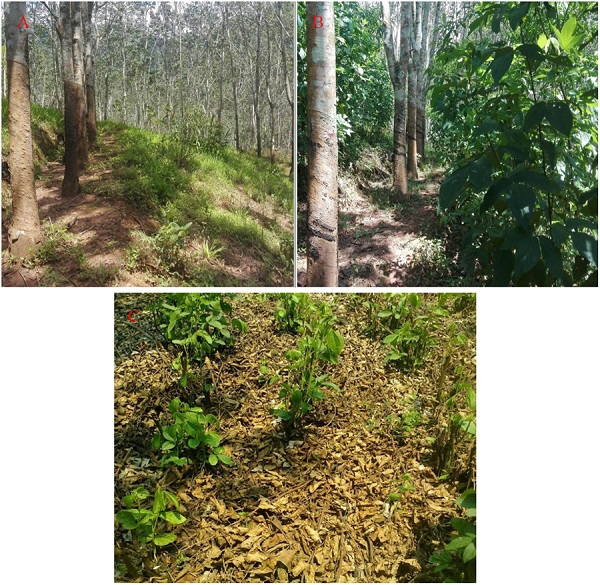Flemingia macrophylla is a perennial leguminous leafy shrub with strong biological nitrogen fixation and high biomass. It is used in traditional medicine for various therapeutic uses and is widely planted in the Xishuangbanna area of China. Rubber–Flemingia macrophylla intercropped systems have become popular in the Xishuangbanna area to improve soil carbon and nitrogen storage. However, little is known about the effect of these systems on soil carbon (C) and nitrogen (N) fractions.
Researchers from Xishuangbanna Tropical Botanical Garden (XTBG) conducted a study to investigate the effect of introducing Flemingia macrophylla to rubber plantations of different ages on soil carbon and nitrogen fractions.
The researchers conducted experiments in four land types, including young rubber plantation, young rubber–Flemingia macrophylla system, mature rubber plantation, and mature rubber–Flemingia macrophylla system.
They found that the introduction of Flemingia macrophylla to the rubber plantations had no significant effect on the C and N contents in the soil, but the fractions of C and N changed significantly.
The introduction of Flemingia macrophylla to the rubber plantations decreased ammonium N (AN) content and increased nitrate N (NN) content, which may have been due to the increased rate of nitrification from improved microbial activity in the rubber–Flemingia macrophylla systems.
The introduction of Flemingia macrophylla also changed the carbon and nitrogen fractions,improved labile organic carbon and nitrogen contents, and ameliorated the soil environment.
The researchers thus recommend that local governments and farmers in southeastern Asia use Flemingia macrophylla as alternative intercropping tree species within rubber plantations.
The study entitled “Introduction of a leguminous shrub to a rubber plantation changed the soil carbon and nitrogen fractions and ameliorated soil environments” has been published in Scientific Reports.
Contact
LIU Changan Ph.D
Key Laboratory of Tropical Plant Resources and Sustainable Use, Xishuangbanna Tropical Botanical Garden, Chinese Academy of Sciences, Menglun 666303, Yunnan, China
E-mail: liuchangan@xtbg.ac.cn

Photographs of the rubber and rubber–Flemingia macrophylla plantations. (A) rubber plantation; (B) rubber–Flemingia macrophylla plantation; (C) Flemingia macrophylla after mowing in the rubber–Flemingia macrophylla plantation.
(Images by LIU Changan)

